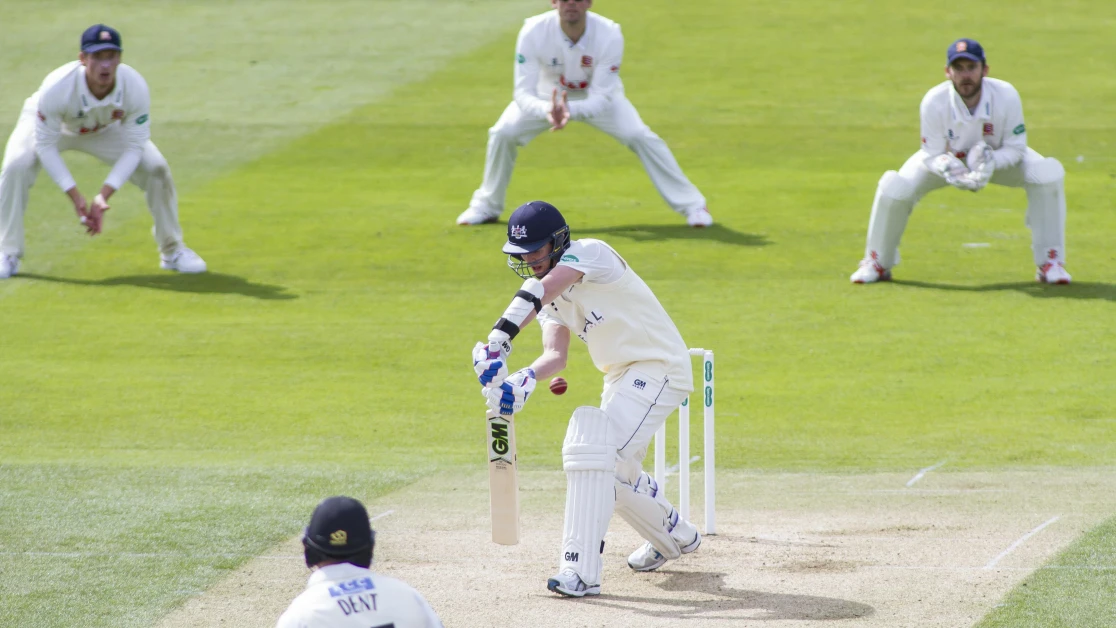
James has worked for the jockey club and has 20 years sports betting experience he utilises his skills in our tipster competitions and writes sports betting content.
As the quadrennial cricket carnival commences, delve into the fascinating world of this sport’s biggest festival - Cricket's World Cup. Chart its robust growth, relive unforgettable exploits, and understand how it strives to dominate the increasingly competitive world of global sports. Whether you're a cricket aficionado or a newbie, buckle up for a comprehensive exploration that’s sure to deepen your appreciation of the game!
🏏 Gear up for the #CricketWorldCup!
As the 2023 edition of Cricket’s World Cup gets underway, 10 nations will play a total of 48 matches across 45 days in a bid to see who reigns supreme in the 50 over form of the game and if it is anything like the 2019 edition, followers of the sport will be in for quite a treat.
With the 2019 final being played between hosts England and New Zealand, one of these two nations would eventually go on to win a first World Cup trophy. A pulsating game of Cricket was played at Lord’s, it would the hosts who would win by the barest of margins.
Some call it Cricket’s greatest ever match; some say it was the pinnacle of sporting drama. To be honest, you would be hard pressed to offer a counter argument against either of these hyperbolic statements.
But now it is time for another chapter of Cricket’s ongoing story and one where it constantly attempts to find prominence in a sporting world that is only becoming more and more jampacked along the way.
As mentioned, 10 teams will enter this year’s edition of the World Cup but this has not always been the case and this is highlighted but the differing number of entrants that have been placed in each edition of the competition.
| Year | Host nation(s) | Teams |
|---|---|---|
| 1975 | England | 8 |
| 1979 | England | 8 |
| 1983 | England | 8 |
| 1987 | India and Pakistan | 8 |
| 1992 | Australia and New Zealand | 9 |
| 1996 | India, Pakistan and Sri Lanka | 12 |
| 1999 | England, Ireland, Netherlands and Scotland | 12 |
| 2003 | South Africa, Kenya and Zimbabwe | 14 |
| 2007 | West Indies | 16 |
| 2011 | India, Sri Lanka and Bangladesh | 14 |
| 2015 | Australia and New Zealand | 14 |
| 2019 | England | 10 |
| 2023 | India | 10 |
From 1975 to 1992, the competition would be comprised of full test members of the ICC and the necessary number of qualifiers to make up the necessary numbers of eight entrants up to 1987 and then nine when South Africa entered the fray in 1992.
However, there would be something of a step change by the time 1996 came about and this was the first real growth spurt when it came to the ICC’s attempts to grow the Cricket World Cup, as nine teams would soon become 12.
As of the 1996 World Cup, the tournament consisted of nine full test members of the ICC and the remaining three places in the competition were earned after qualification from the ICC Trophy – a competition for associate members of the ICC.
A format that was kept the same in 1999 but further expanded in 2003, as Bangladesh also earned full test membership from the ICC and this subsequently meant the tournament was expanded to 14 nations.
| Full Members |
|---|
| Bangladesh |
| England |
| New Zealand |
| South Africa |
| West Indies |
| Associate Members |
| Kenya |
| Namibia |
The ICC party was at its biggest but the desire to grow was not fulfilled yet. Fast forward to 2007 and 14 nations had now swelled to 16. The same 10 full test members but two more additional slots opened up to associate qualifiers:
| Full Members |
|---|
| Australia |
| England |
| New Zealand |
| South Africa |
| West Indies |
| Associate Members |
| Bermuda |
| Kenya |
| Netherlands |
Unfortunately for the ICC, their expansion in 2007 was deemed as a failure and suddenly the Cricket World Cup was accused of looking at quantity rather than quality. An accusation that they would look to fix by the 2011 tournament and the number of entrants would decrease as a consequence.
For both the 2011 and 2015 editions of the World Cup, the entrants would shrink back to 14 and the 10 + 4 method that was utilised in 2007 – the viewpoint being that contraction may actually help the tournament going forward.
A viewpoint that was further confirmed in 2019, when the Cricket World Cup would only have 10 entrants and the guarantee of being a full ICC test member was no longer an automatic invite to the tournament – now a level of jeopardy had been inserted into the qualification process.
Not a great deal of jeopardy, but jeopardy all the same and with hosts England being afforded obvious qualification, the next seven berths were handed out to those nations that were in the One Day International rankings top eight.
Two more slots up for grabs and a debut from Afghanistan and that the expense of test members Zimbabwe, as they joined the West Indies through the 2018 qualifying process and rounded out the 10 entrants.
A far leaner tournament compared to the bloated nature of 2007 and one that generated a far greater spectacle than seen before. Such was the success of four years ago, the same format has been replicated for 2023.
Because of such evolution, it is fair to say that this tournament has had some growing pains over the past few decades. Pains that come in trying to not only work out what is the optimum number of entrants but also the best format for the competition.
| Year | Host nation(s) | Teams | Matches | Length in days | Format of first round | Format of latter stages |
|---|---|---|---|---|---|---|
| 1975 | England | 8 | 15 | 14 | 2 groups of 4 with sides playing each other once | Semi-finals and final |
| 1979 | England | 8 | 15 | 14 | 2 groups of 4 with sides playing each other once | Semi-finals and final |
| 1983 | England | 8 | 27 | 16 | 2 groups of 4 with sides playing each other twice | Semi-finals and final |
| 1987 | India and Pakistan | 8 | 27 | 31 | 2 groups of 4 with sides playing each other twice | Semi-finals and final |
| 1992 | Australia and New Zealand | 9 | 39 | 32 | 1 groups of 9 with sides playing each other once | Semi-finals and final |
| 1996 | India, Pakistan and Sri Lanka | 12 | 37 | 32 | 2 groups of 6 with sides playing each other once | Quarter-finals, semi-finals and final |
| 1999 | England, Ireland, Netherlands and Scotland | 12 | 42 | 37 | 2 groups of 6 with sides playing each other once | 1 group of 6 (with sides playing the other group's top 3 once), semi-finals and final |
| 2003 | South Africa, Kenya and Zimbabwe | 14 | 54 | 42 | 2 groups of 7 with sides playing each other once | 1 group of 6 (with sides playing the other group's top 3 once), semi-finals and final |
| 2007 | West Indies | 16 | 51 | 46 | 4 groups of 4 with sides playing each other once | 1 groups of 8 (with sides playing the other group's top 4 once), semi-finals and final |
| 2011 | India, Sri Lanka and Bangladesh | 14 | 49 | 42 | 2 groups of 7 with sides playing each other once | Quarter-finals, semi-finals and final |
| 2015 | Australia and New Zealand | 14 | 49 | 43 | 2 groups of 7 with sides playing each other once | Quarter-finals, semi-finals and final |
| 2019 | England | 10 | 48 | 45 | 1 group of 10 with sides playing each other once | Semi-finals and final |
| 2023 | India | 10 | 48 | 45 | 1 group of 10 with sides playing each other once | Semi-finals and final |
If we look at each of the tournaments that have taken place since 1975, it is not only the number of entrants and the formats that have changed, but also the duration of the tournaments themselves. In the ICC’s eyes, it has now become a quest to squeeze in as much Cricket as possible.
Compared from 1975 to 2023, there are only two more nations playing 48 years later but there are now 33 more matches scheduled in the current edition of the tournament and two weeks have now swelled to six and a half in terms of duration.
What was a standard group stage format to begin with has now swelled into a full round robin for the first round. If every nation is playing every other, then there cannot be any arguments as to who the eventual best in the world will be.
Yes, there may be plenty more cricket on show but the flipside is that does feel like a slog to watch at times. The round robin stage that seemingly never ends and all of sudden shifts to the semi-final and final.
Too much cricket and not enough jeopardy, once again the balancing act of the Cricket World Cup is difficult when there are so may stakeholders to keep happy and the largest stakeholder of all, will be those who hold the broadcasting rights.
If they are paying through the nose to show the best that the sport has to offer, then they are going to want as much content as possible. The tournament may be hosted in more than 20 nations, but it is the Indian sub-continent that will be paying the biggest bucks to screen it.
None more so than in India themselves and with Disney Star’s current contract being worth $2bn over eight years (ending 2023), their next deal with the ICC is worth $3bn for half the length of time. More money on a shorter deal sees the ICC hitting this one for six.
With India being the true hotbed of global cricket, the sums involved do seem rather eyewatering but when you consider the population and the fever for the game there, even a deal worth $3bn seems rather good business.
However, there is perhaps a sticking point in all of this and how the ICC tries to grow the game beyond 10 test playing nations and roughly the same number of viable associates who are also trying to qualify for each edition of the tournament.
When we look at the number of nations that have appeared in the Cricket World Cup to date, the number is only 20:
| Team | First Season | Last Season |
|---|---|---|
| Australia | 1975 | 2023 |
| East Africa | 1975 | 1975 |
| England | 1975 | 2023 |
| India | 1975 | 2023 |
| New Zealand | 1975 | 2023 |
| Pakistan | 1975 | 2023 |
| Sri Lanka | 1975 | 2023 |
| West Indies | 1975 | 2019 |
| Canada | 1979 | 2011 |
| Zimbabwe | 1983 | 2015 |
| South Africa | 1992 | 2023 |
| Kenya | 1996 | 2011 |
| Netherlands | 1996 | 2023 |
| United Arab Emirates | 1996 | 2015 |
| Bangladesh | 1999 | 2023 |
| Scotland | 1999 | 2015 |
| Namibia | 2003 | 2003 |
| Bermuda | 2007 | 2007 |
| Ireland | 2007 | 2015 |
| Afghanistan | 2015 | 2023 |
Because unlike football, cricket does not have the ability to spread its footprint over the globe with ease. It is yet to truly conquer Europe and to be honest, why would it when there is no British Empire legacy within the European Union and beyond.
With the roots of the game being intertwined with the British Empire, there is no easy selling point to those who consider themselves as cricket averse nations. It is easy to have a kickabout in the park in Paris, it is not so easy to start bowling leg spin when it is lashing down with rain.
Which begs the question, are there any new frontiers for cricket to find? The answer to this is the same as many others. The frontier that you must crack for global dominance is the United States and although it may be the shorter form of the World Cup, the T20 may be the way forward for the ICC.
The even shorter form of cricket has the ability to be packaged into four hours – perfect timing when it comes to televisual attention spans and with the United States playing a part in hosting the next edition of the T20 World Cup in 2024, this could be the start of a real global foothold.
Especially as next year’s T20 World Cup is set to be the biggest of all time. 20 nations will be competing to be the best when it comes to quickfire cricket – whether the quantity over quality argument comes to the fore again remains to be seen.
While the United States have also been testing the appetite of cricket fans across the country with the launch of Major League Cricket. Six franchises recently played out the inaugural MLC season, MI New York are the first champions in the history books.
Although the growth of the T20 World Cup is something to be celebrated within cricket circles, it does also place its 50 over cousin at risk. Yes, the two can co-exist in the calendar at present, but if more countries are only interested in the shorter form, the slightly longer form loses relevance.
The fear will be that the 20 over version eventually cannibalises the 50 over form of international competition. Those fears are allayed for 2027, as the format expands back to 14 nations but all eyes will be on how the United States takes to the T20 World Cup next year.
If Big Sam starts to prefer sixes to home runs, then the game’s powerbase may eventually shift from the Indian sub-continent to North America and although it may grow the game globally, we may end up losing the tried and tested format of 50 over cricket for good.
Contributor Information
We take great pride in the information provided in our cricket betting previews and the The Unprecedented Growth Of Cricket's World Cup is no exception. James and Dan work seamlessly together to collate and present the data in this superb guide to this event


